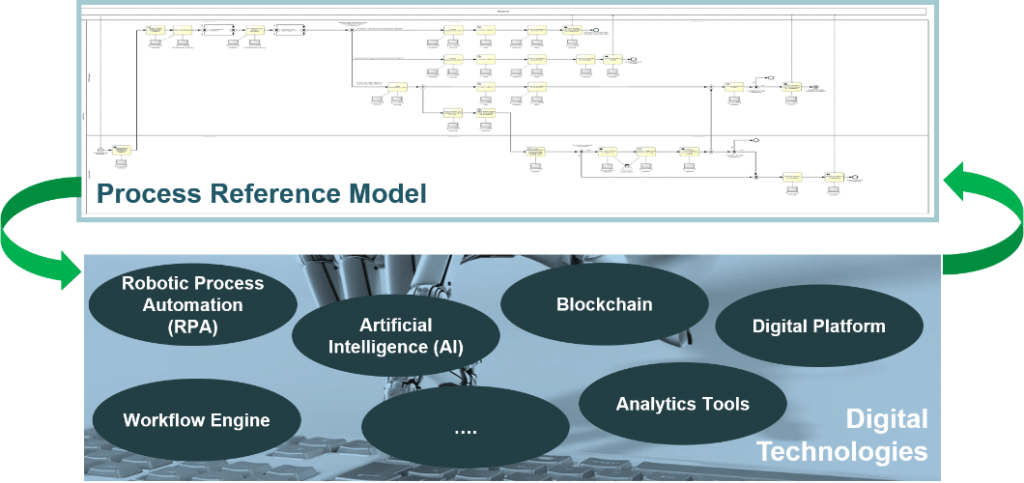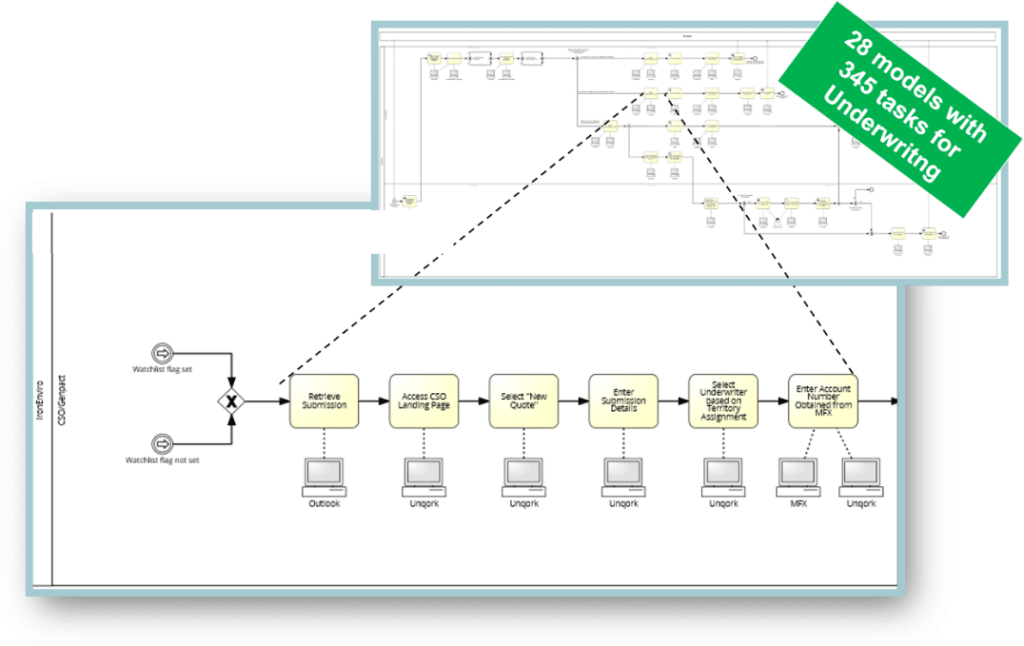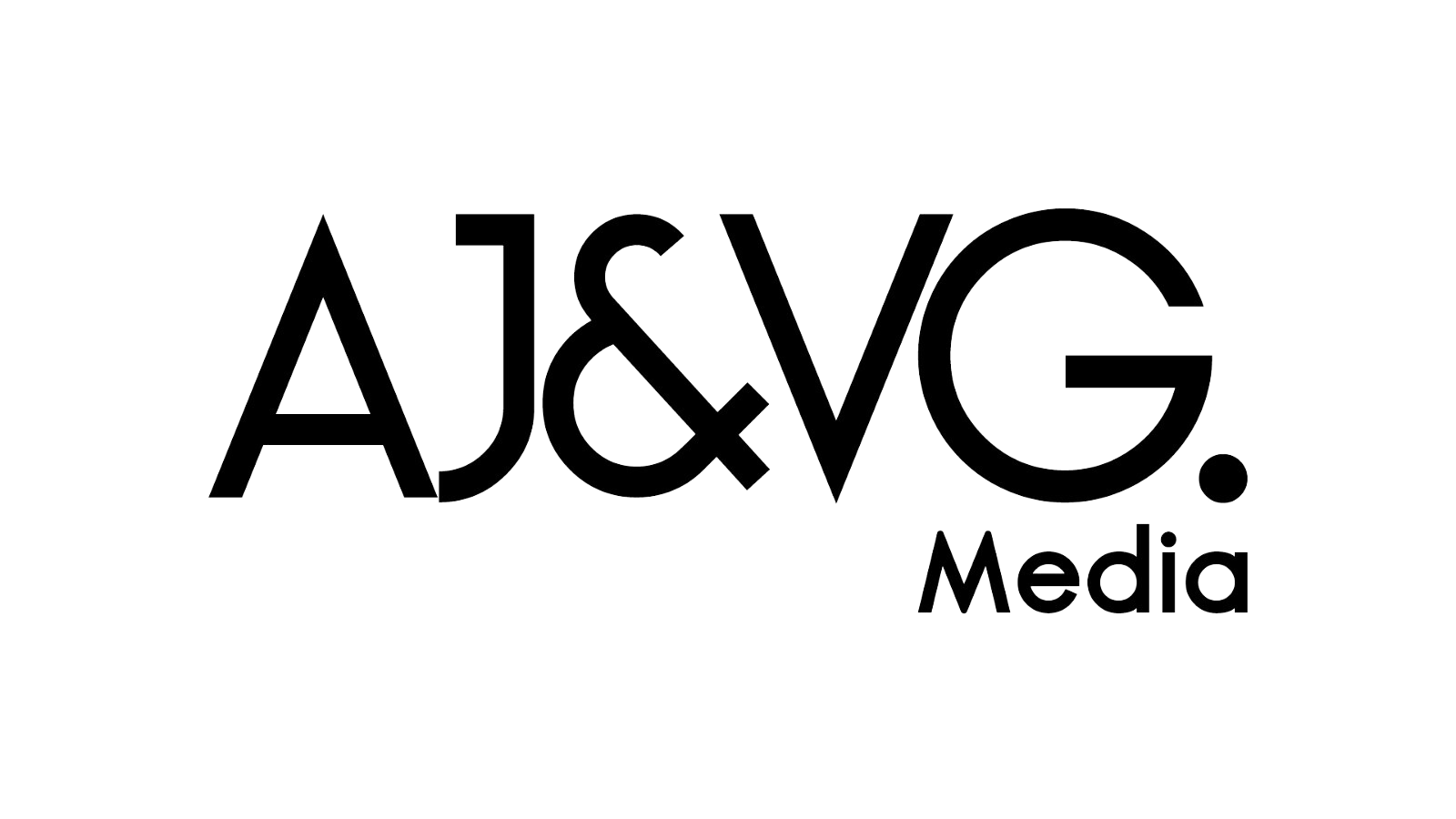
In most organizations, digital transformation has become the main topic (Kirchmer, Franz, Lotterer, Antonucci, Laengle, 2016). However, only a small number of those companies have their business processes sufficiently under control to realize the full value of new digital technologies (Kirchmer, 2019) (Cantara, 2015). Process reference models help to address that challenge (Kirchmer, Franz, 2020).
1. Value and Definition of Process Reference Models
Reference models simplify the efficient and reliable transfer of good business practices from one area into another. They help, for example, to capture, structure, and apply best practices regarding the use of software or other digital technologies as enablers of specific business processes or define common practices as the basis for standardization initiatives.
Reference models, in general, are defined as generic conceptual information models that formalize recommended practices for a special domain (Kirchmer, 2017) (Fettke, Loos, 2007a, 2007b) (Scheer, 1993). Those models have the following main characteristics:
- Representation of common or best practices: Reference models provide the necessary knowledge for conducting business activities in a specific domain at the desired performance level.
- Universal applicability: Reference models deliver business content that can be used beyond an individual situation.
- Reusability and Adaptability: Reference models are conceptual frameworks that can be easily re-used in many related projects. They are structured for easy adaptability to specific situations.
Process reference models (PRM) are reference models that describe business processes in the form of process models, using standard modeling approaches such as BPMN (Fisher, 2012). Those can be complemented by models for other views on processes, like functions, data, organizational structure, or deliverables of the process (Scheer, 1998). The definition of PRM is visualized in Figure 1.

The use of PRM provides significant benefits in the design, implementation, execution, and controlling of new business processes or the adjustment of existing ones(Kirchmer, 2017):
- Cost reduction
- Time reduction
- Quality improvement
- Risk reduction
- Transparency over new or common practices
- Common language – supporting effective communication
- Preparation for benchmarking
- Enabling of standardization
- Innovation through the transfer of practices between domains
So, what’s now special of process reference models to be used in digital transformation initiatives?
2. Digitalization Process Reference Models and their Use
Digital transformations leverage internet-based digital technologies to integrate physical products and people to enable new or modified high-performance business processes (Kirchmer, 2017). PRM with characteristics suited for these transformations is referred to as digitalization process reference models (DPRM).
Software-based process reference models have been around for over 20 years. Initially, they have been created to make the business content of complex application systems, such as ERP systems, transparent (Curran, Keller, 1999) (Kirchmer, 1999). However, requirements to describe processes enabled through digital technology solutions have evolved. While ERP systems and similar applications mainly focus on relatively stable processes, such as finance, human resources, or warehouse management, today’s business environment requires the support of market-facing processes that are built to change. Technologies have become more flexible and universally usable. DPRM must incorporate those trends.
In a digital transformation, processes, are often supported through a combination of different technologies, for example, an integration, and development platform combined with several application components, a workflow engine, and robotic process automation (RPA). DPRMhave to reflect this combination of technology components, as visualized in Figure 2.

Most of the new digital technologies can be used in a very flexible way, they don’t have much pre-defined business content themselves. Robotic Process Automation (RPA), for example, can be used in different business processes to handle different documents, such as supplier invoices or insurance claims (Kirchmer, Franks, 2019). DPRM has to provide the business context and describe the business impact of technology in this specific process.
Digitalization process reference models are purchased or developed in the planning phase of a digital transformation. The use of DPRM in digital transformations is consistent with the application of reference models in general. Components of the DPRM that are not relevant for a specific process are removed and the flow logic is adjusted wherever necessary. The approach to use digitalization reference models is illustrated in Figure3.

Other special digitalization aspects, such as the definition of new roles or data-related aspects, have to be added to the DPRM, as required (Kirchmer, Franz, 2020). Let’s now have a look at a specific case example.
3. Practice Experience with Digitalization Process Reference Models
The impact of DRPM is explained using the example of a major North American insurance company. The scope is the transformation of the underwriter processes across product areas. The goal is a significant cost reduction and better scalability. The transformation is enabled through the emerging digital no-code platformUnqork (Unqork, 2020), which is integrated with various other technologies.
The reference models were developed in the first initiative and then re-used in10+ product units. The DPRM consists of 28 individual process models with 345 tasks. It was developed two levels of detail using the Signavio Process Manager as modeling and repository tool (Signavio, 2020). The structure of the reference model is illustrated in Figure 4. The modeling method is BPMN.

The reference model was first used to identify improvement opportunities for existing processes. Comparing the DPRM with existing processes, it was determined, which steps could be completely automated or avoided. The to-be processes were developed using the DPRM as a basis, as described before. This brought significant benefits, such as:
- Accelerated processes design
- Transparency over business impacts
- Reduced implementation risk and improved quality
- A common language for transformation
As-is and to-be process models were used as the basis for process simulation. This allowed us to predict a reduction of the administrative effort of 88% and an overall process cost reduction of 49%. Scalability is expected to increase by a factor 9. The reference models were also used to prepare the people to change management and guide the configuration of the platform. The analysis and design efforts were reduced by over 60% through the DPRM. To support the roll-out of the approach, a “reference model playbook” was developed.
The reference models have been successfully used and well accepted by the involved teams. The models have become an important component of the discipline of business process management and support the new digital “BPM 4.0” (Kirchmer, 2018).
References
Cantara, 2015. ‘Startup your Business Process Competency Center’. In: Documentation of The Gartner Business Process Management Summit, National Harbour.
Curran, Keller, 1999. SAP R/3 business blueprint: Business engineering mit den R/3-Referenzprozessen. Bonn.
Fettke, Loos, 2007a.Classification of reference models.: A methodology and its application. In: Information Systems E-Business Management 1(1), 35–53.
Fettke, Loos, 2007b. Perspectives on reference modeling. In: Fettke, P, Loos, P (eds.) Reference Modelling for Business Systems Analysis, pp. 1–20. Hershey, London.
Fisher, 2012. BPMN 2.0 Handbook – Methods, Concepts, Case Studies, and Standards in Business Process Modelling Notation (BPMN). Lighthouse Point.
Franz, Kirchmer (2012). Value-Driven Business Process Management: The Value-Switch for Lasting Competitive Advantage. 1st ed. McGraw-Hill.
Jost, 1993.EDV-gestuetzte CIM Rahmenplanung. Wiesbaden.
Kinaxis, 2020. Solutions. In: https://www.kinaxis.com/en
Kirchmer, 1999. Business Process Oriented Implementation of Standard Software – How to Achieve Competitive Advantage Efficiently and Effectively. 2nd ed., Berlin.
Kirchmer, 2015. The Process of Process Management – Mastering the New Normal in a Digital World. In: BMSD Proceedings, July 2015.
Kirchmer, 2017. High Performance through Business Process Management –Strategy Execution in a Digital World. Springer, 3rdedition, New York, Berlin, e.a.
Kirchmer, 2018. Enabling High Performance in the Digital Age – From Europe to Australia, Industry 4.0 requires the discipline of business process management 4.0. In: ISE Magazine, November 2018, Volume 50, Number 11.
Kirchmer, 2019.Value-driven Digital Transformation: Performance through Process. In: IM+io, Best & Next Practices ausDigitalisierung | Management | Wissenschaft, Heft 2, Juni 2019.
Kirchmer, Franz,2019. Value-driven Robotic Process Automation (RPA) – A Process-led Approach for Fast Results at Minimal Risk. In: Proceedings of the 9th International Symposium on Business Modelling and Software Design, Lisbon, July 1-3, 2019.
Kirchmer, Franz, 2020.Process Reference Models: Accelerator for Digital Transformation. In: Shishkov B. (eds) Business Modeling and Software Design. BMSD 2020. Lecture Notes in Business Information Processing, vol 391 (ISBN: 978-3-030-52305-3). Springer.
Kirchmer, Franz, Lotterer, Antonucci, Lengle, 2016.The Value-Switch for Digitalisation Initiatives: Business Process Management. BPM-D Whitepaper, Philadelphia – London.
Scheer. 2018. Unternehmung 4.0 – Von disruptivenGeschaeftsmodell zur Automatisierung von Geschaeftsprozessen. 1st edition, AWSi Publishing, Saarbrucken, Germany.
Scheer, 1998. ARIS – Business Process Frameworks, Springer, 2nd edition, Berlin, e.a.
Scheer, 1994. Business Process Engineering – Reference Models of Industrial Enterprises. 2nd ed., Berlin.
Signavio, 2020. Signavio Process Manager. In: https://www.signavio.com/products/process-manager/.
Stoudt-Hansen, Karamouzis, Villa, Saikat, Dunie, Sturgill, Shotton, Miers, Biscotti, 2019. Predicts 2020: Barriers Fall as Technology Adoption Grows. A Gartner Trend Insight Report, Boston.
Sutherland, 2014. SCRUM – The Art of Doing Twice the Work in Half the Time. Penguin Random House, New York.
Unqork, 2020. Unqork Insurance Software. In: https://www.unqork.com/solutions/insurance.



